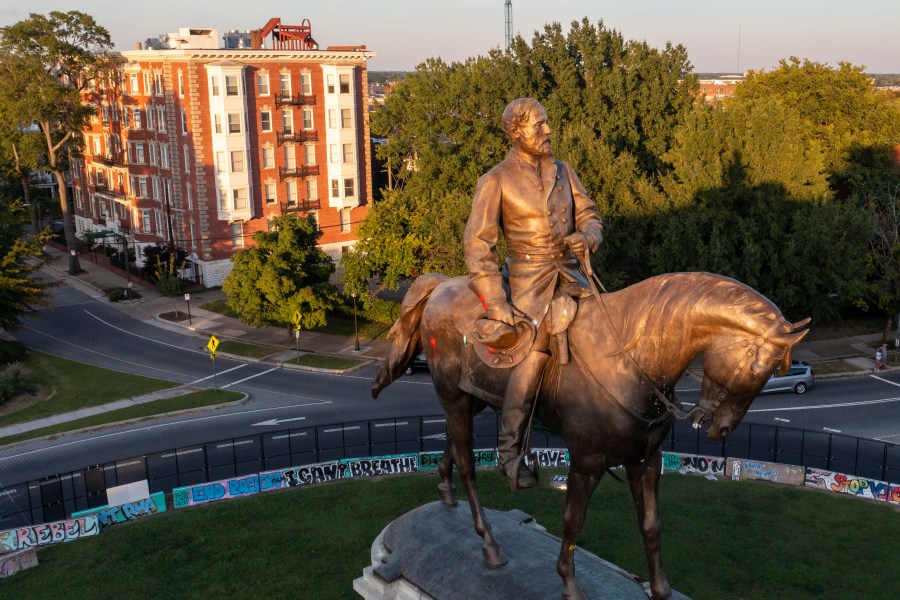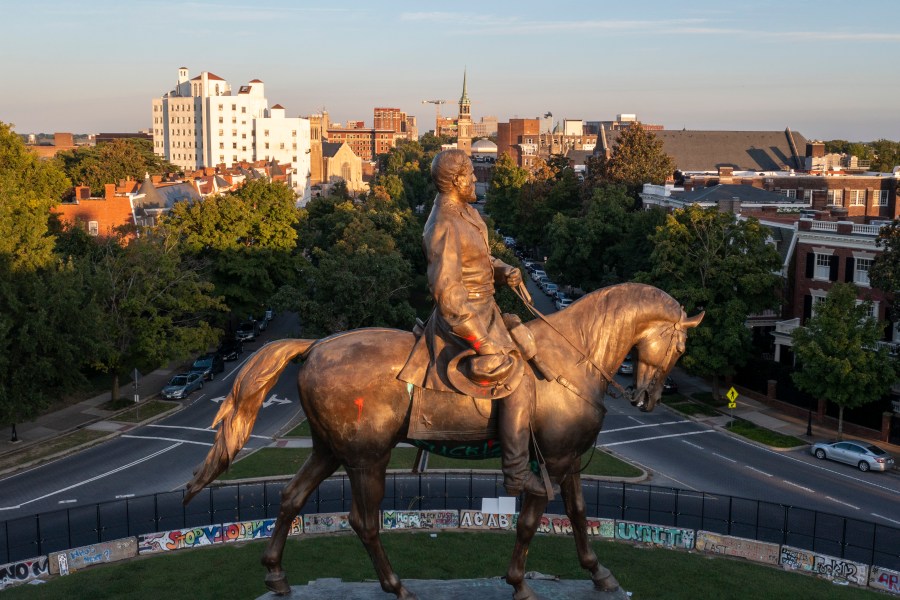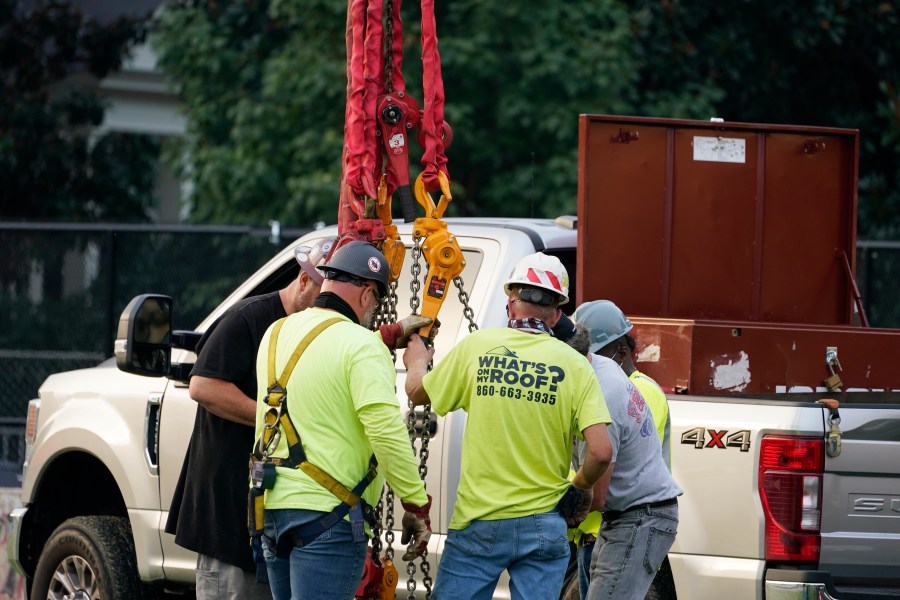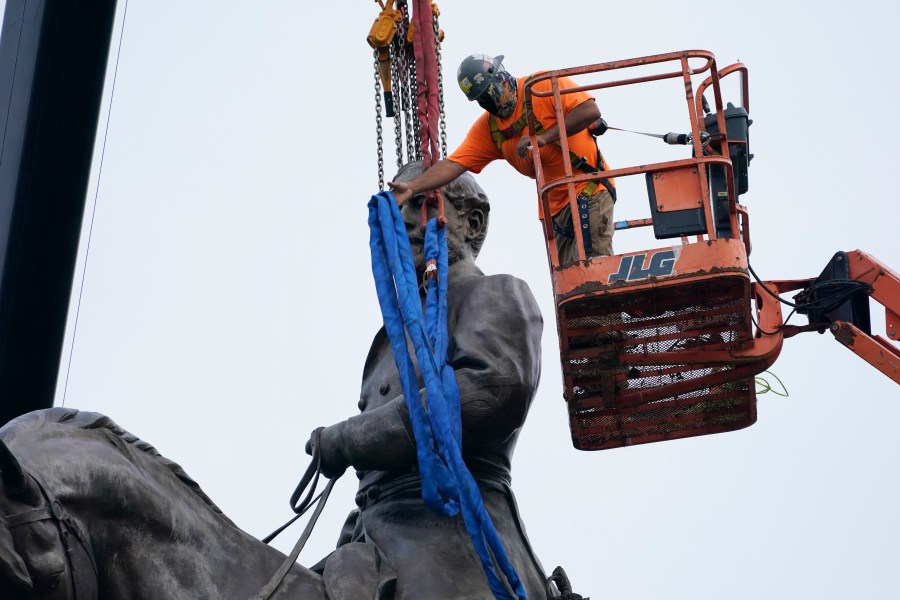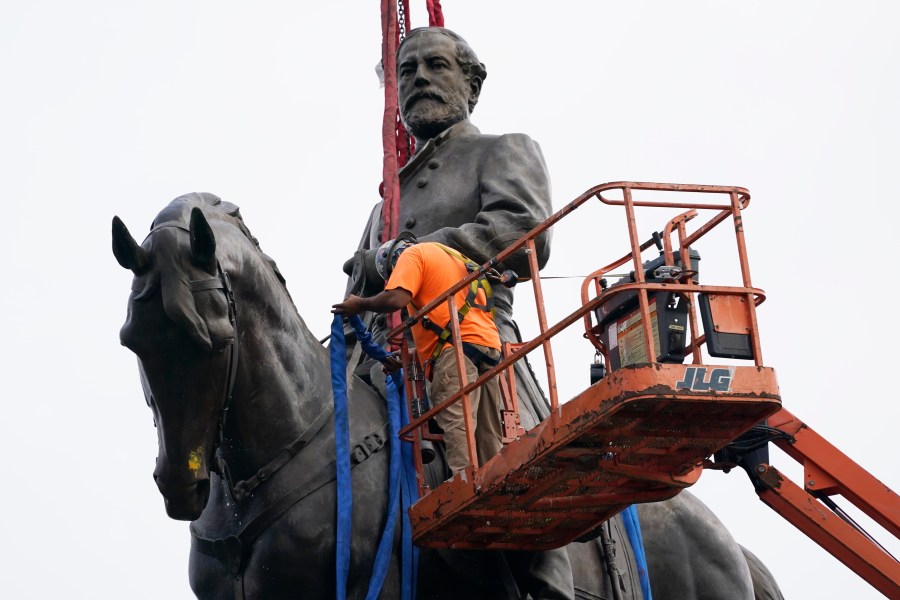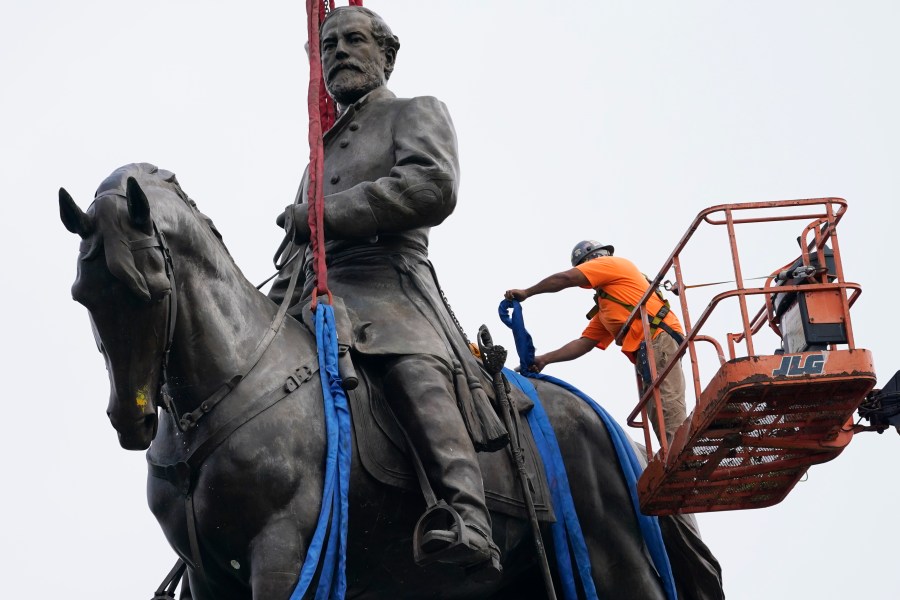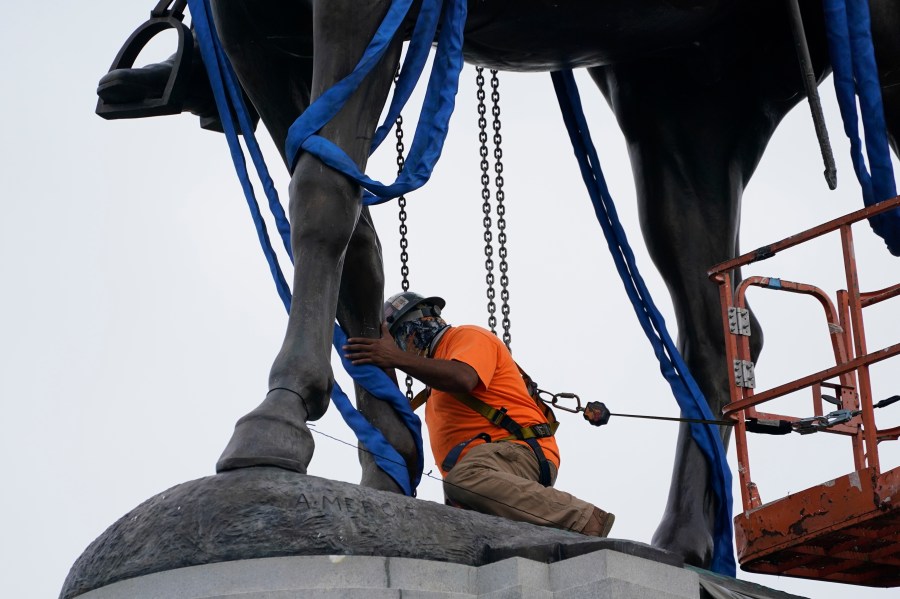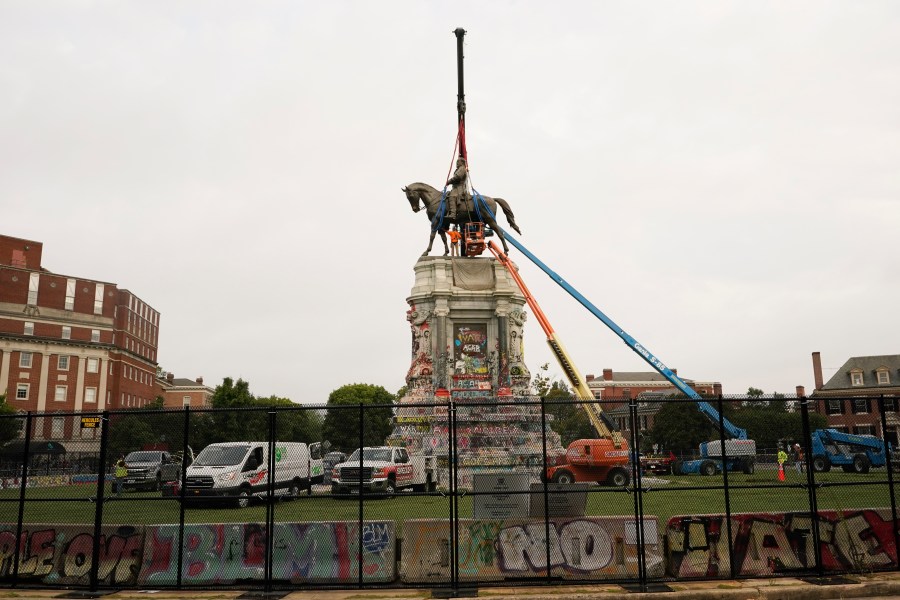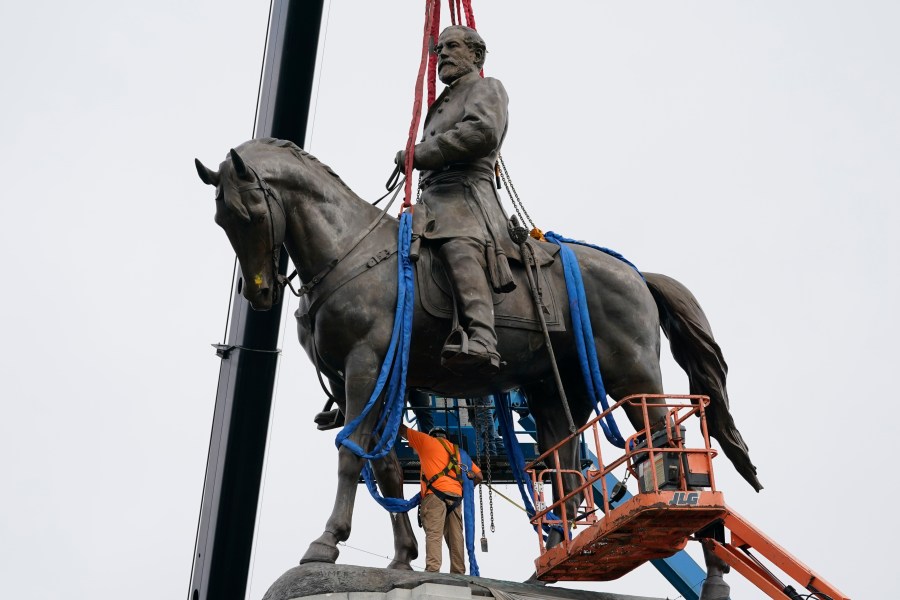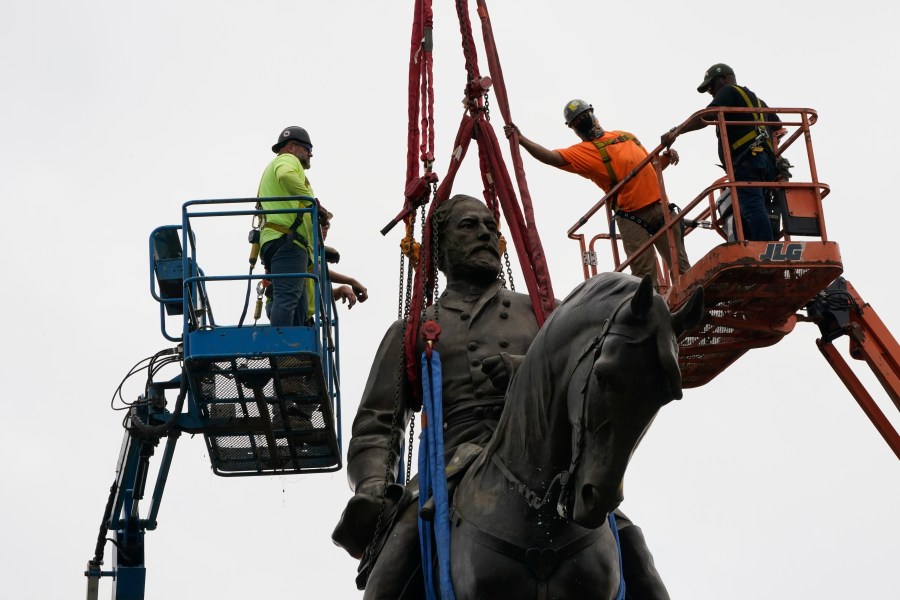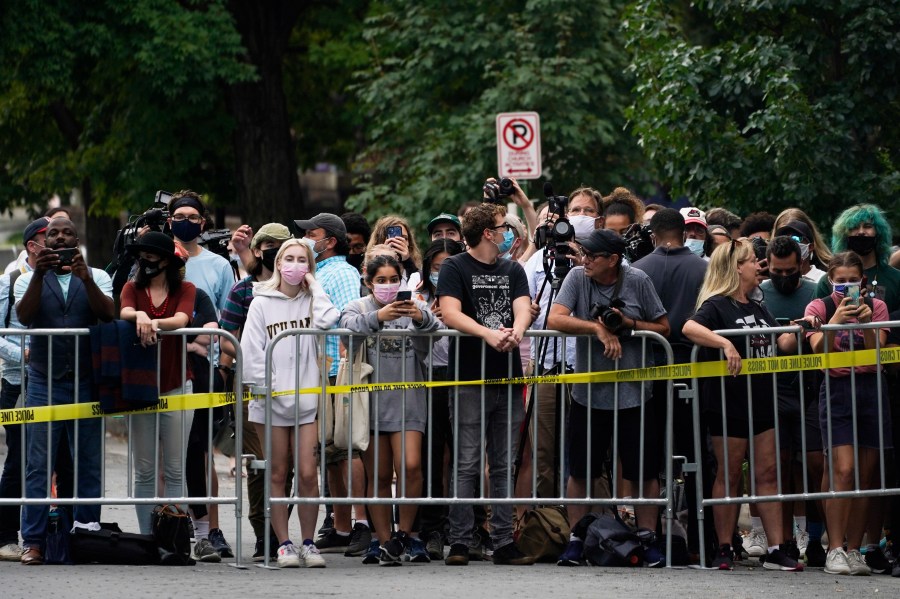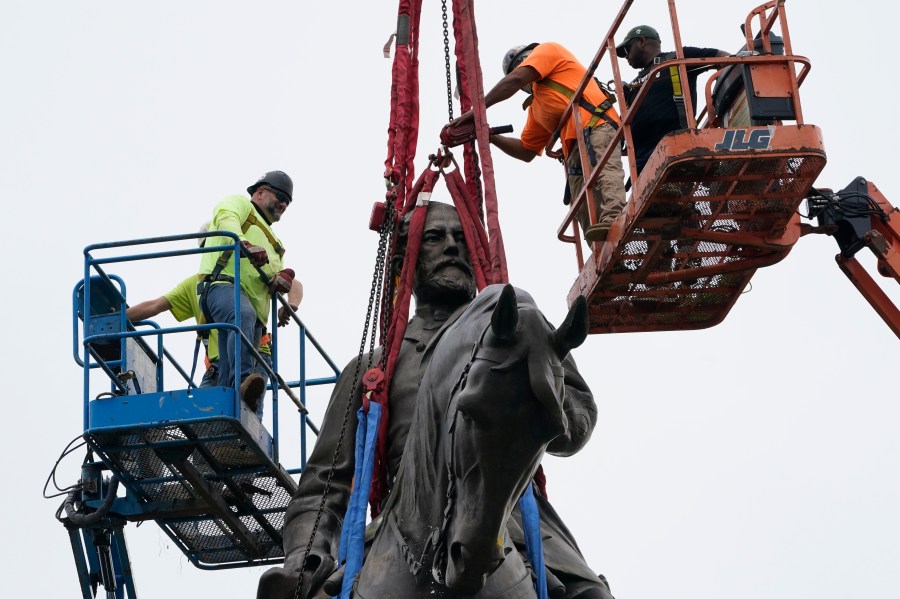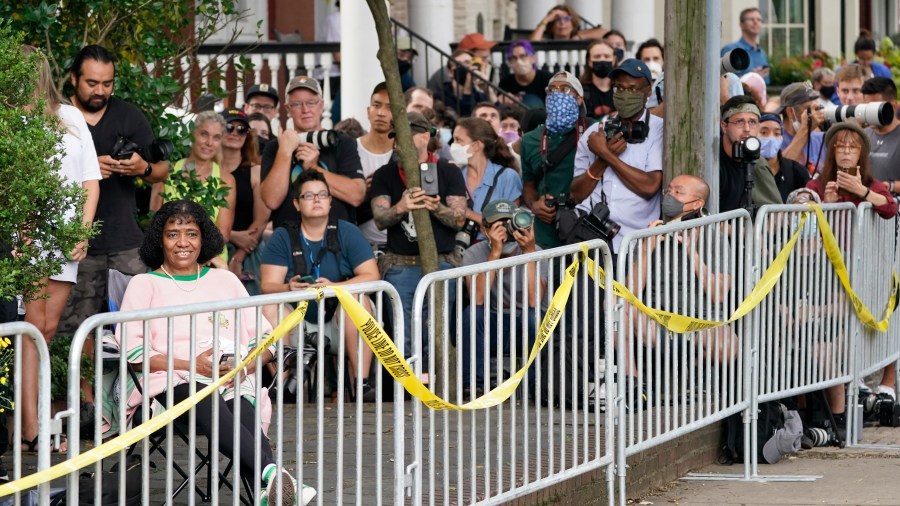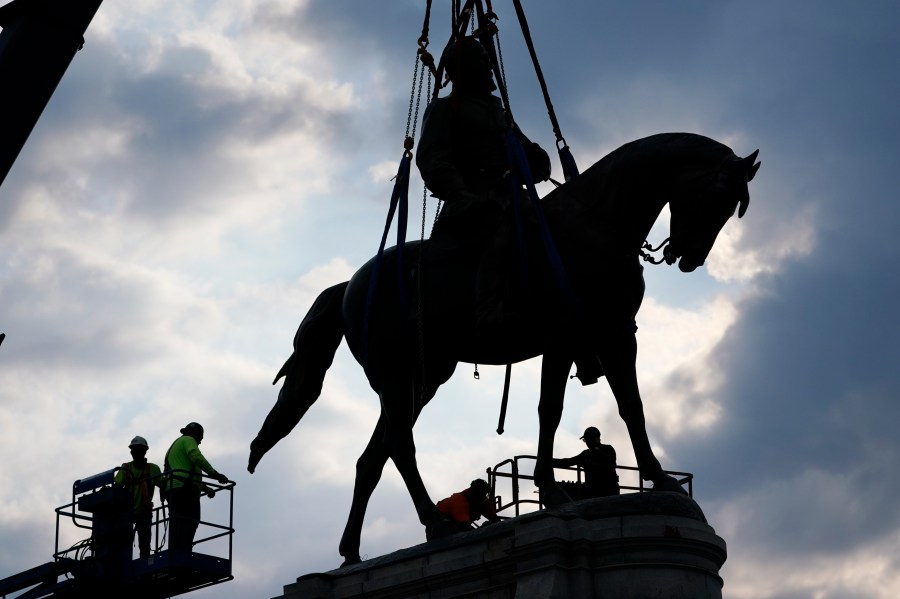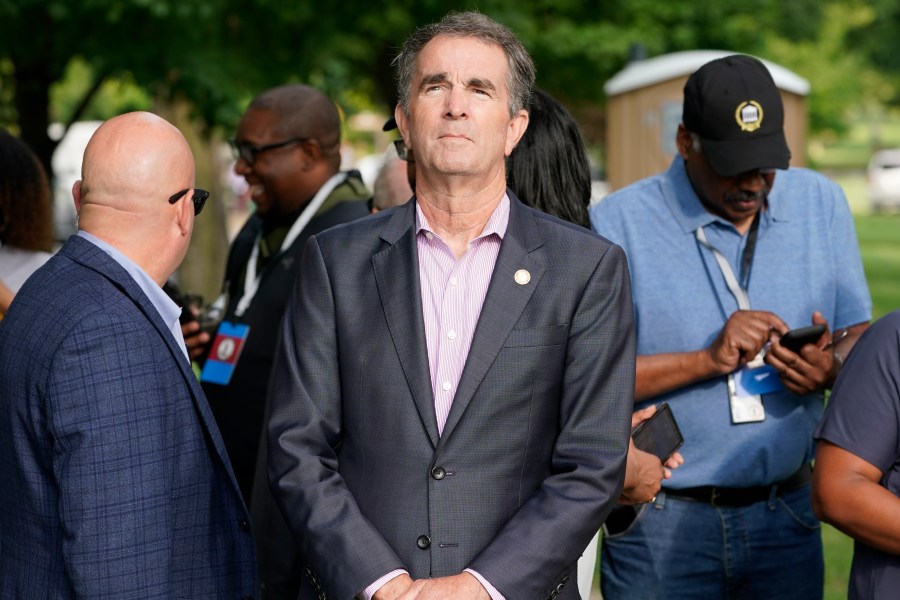RICHMOND, Va. (AP) — A crowd erupted in cheers and song Wednesday as work crews hoisted an enormous statue of Confederate Gen. Robert E. Lee off the giant pedestal where it has towered over Virginia’s capital city for more than a century.
One of America’s largest monuments to the Confederacy, the equestrian statue was lifted down to the ground just before 9 a.m., after a construction worker who strapped harnesses around Lee and his horse lifted his arms in the air and counted down, “Three, two, one!” to jubilant shouts from a crowd of hundreds. A work crew then began cutting it into pieces.
“This was a long time coming, part of the healing process so Virginia can move forward and be a welcoming state with inclusiveness and diversity,” said Gov. Ralph Northam, who was there to witness the event. The Democrat said it represents “more than 400 years of history that we should not be proud of,” and congratulated Virginians for supporting its removal.
Sharon Jennings, an African American born and raised in Richmond, said the statue had to go, but she still had mixed feelings seeing it come down.
“It’s a good day, and it’s a sad day at the same time,” Jennings, 58, said. “It doesn’t matter what color you are, if you really like history, and you understand what this street has been your whole life and you’ve grown up this way, you’re thinking, ‘Oh, my God.’ But when you get older you understand that it does need to come down.”
Some chanted “Whose streets? Our streets!” and sang, “Hey hey hey, goodbye.” There was a brief commotion when a man with a Black Lives Matter flag ran into the fenced-off work area. He was quickly detained by police and escorted out, where he began arguing with others in the crowd.
Northam ordered the statue taken down last summer, citing the pain felt across the country over the death of George Floyd in Minneapolis after a white police officer pressed a knee into his neck. But his plans were tied up in litigation until the Supreme Court of Virginia cleared the way last week.
The 21-foot (6-meter) high bronze sculpture sat atop a granite pedestal nearly twice that tall, towering above Monument Avenue since 1890 in this former capital of the Confederacy.
The state brought in a deconstruction crew surrounded by a heavy police presence to strap the statue to a crane. State, capitol and city police officers closed streets for blocks around the state-owned traffic circle in Richmond, using heavy equipment and crowd-control barriers to keep crowds away. The Federal Aviation Administration granted the state’s request to ban drone flights during the event, which will be livestreamed through the governor’s Facebook and Twitter accounts.
“This is a historic moment for the city of Richmond. The city, the community at large is saying that we’re not going to stand for these symbols of hate in our city anymore,” said Rachel Smucker, 28, a Richmond resident who was at the viewing site early Wednesday with her sister.
Smucker, who is white, said she moved to Richmond around three years ago. It was her first time living in the South, and she found Monument Avenue “jarring.”
“I’ve always found it to be offensive, as a symbol of protecting slavery and the racism that people of color still face today,” Smucker said.
The one-of-a-kind piece, valued for its artistic quality, stood among four other massive Confederate statues on the avenue, but the city removed the others last summer.
“We put things on pedestals when we want people to look up,” Northam said in June 2020 when he announced the removal plan. “Think about the message that this sends to people coming from around the world to visit the capital city of one of the largest states in our country. Or to young children.”
The statue was being cut into at least two pieces so that it could be hauled to an undisclosed state-owned facility until a decision is made about its final disposition. The pedestal is to remain for the time being, although workers are expected to remove decorative plaques and extricate a time capsule on Thursday.
After Floyd’s death, the area around the statute became a hub for protests and occasional clashes between police and demonstrators. The pedestal has been covered by constantly evolving, colorful graffiti, with many of the hand-painted messages denouncing police and demanding an end to systemic racism and inequality.
The decisions by the governor and Richmond Mayor Levar Stoney to remove the Confederate tributes marked a major victory for civil rights activists, whose previous calls over the decades to remove the statues had been steadfastly rebuked by city and state officials alike.
A previous wave of resistance to the statues came in 2017 when a rally of white supremacists in the city of Charlottesville erupted into violence. Other Confederate monuments started falling around the country.
But in Virginia, local governments were hamstrung by a state law that protected memorials to war veterans. That law was amended in 2020 by the new Democratic majority at the statehouse and signed by Northam. With the changes that took effect on July 1, 2020, localities could decide the monuments’ fate.
Stoney then moved swiftly, citing the continuing demonstrations and concerns that protesters could get hurt if they tried to bring down the enormous statues themselves.
Work crews removed statues of Gen. Thomas “Stonewall” Jackson, Confederate naval officer Matthew Maury and Gen. J.E.B. Stuart from the thoroughfare. Before Stoney’s decree, protesters toppled a statue of Confederate President Jefferson Davis. Although the figures themselves are gone, their pedestals remain.
Northam’s plans to remove the Lee statue stalled until the Supreme Court of Virginia cleared the way last week in unanimous rulings against two lawsuits, saying that in a democracy, “values change and public policy changes too.”
The changes have remade the prestigious avenue, which is lined with mansions and tony apartments and is partly preserved as a National Historic Landmark district. Richmond officials are advancing plans to remove the pedestals and other remnants of the statuary and at least temporarily pave over or re-landscape the sites. Northam has tapped the Virginia Museum of Fine Arts to lead a community-driven redesign for the whole avenue, a process that is expected to be drawn-out and has yet to make substantial progress.
A statue of Black tennis hero and Richmond native Arthur Ashe that was erected on the avenue in 1996 is expected to remain.
As for the Lee statue, Northam has said his administration will seek public input on what should happen to it next.

